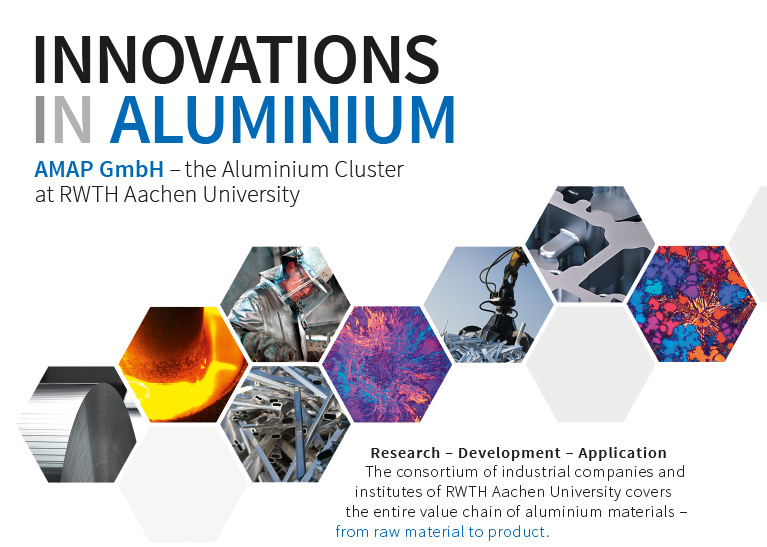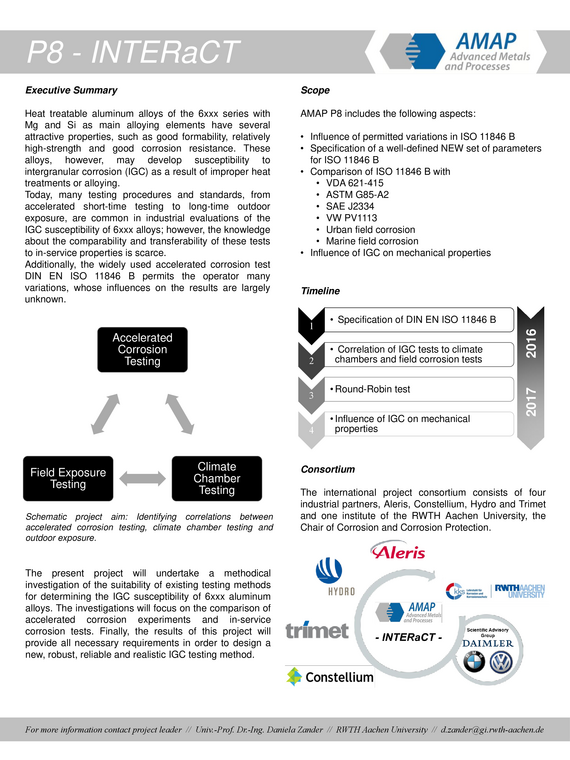Intergranular Corrosion Testing of 6xxx‐Aluminum Alloys
Project Target
Heat treatable aluminum alloys of the 6xxx series with Mg and Si as main alloying elements have several attractive properties, such as good formability, relatively high-strength and good corrosion resistance. These alloys, however, may develop susceptibility to intergranular corrosion (IGC) as a result of improper heat treatments or alloying.
In Europe, a widely used standard for determining IGC susceptibility is the DIN EN ISO 11846 Method B, which involves the 24 hour immersion of the alloy in an aqueous solution containing 30 g/l NaCl and 10 ml/l concentrated hydrochloric acid. The assessment criterion of this standard is the maximal penetration depth and the frequency of attacks after 24 hours of immersion. The automotive industry, as well as their suppliers, refer to these values to define the IGC susceptibility of aluminum alloys; however, round-robin tests of the consortium reveal that the test is very sensitive to permitted variations in the test procedure resulting in an insufficient reproducibility and reliability of this test method. Consequently, this testing procedure, according to the ISO standard, is not sufficiently well defined to determine reliable information about IGC susceptibility.
Aside from the insufficient reliability of the standard, the correlation with real service conditions is very limited. Investigations by the consortium compared the accelerated immersion test DIN EN ISO 11846 Method B and the climatic cyclic test ASTM G85A2. Climatic cyclic corrosion tests, which are very common in the automotive industry, produced completely different corrosion morphologies in comparison with the IGC test standard. The ISO 11846 led exclusively to intergranular corrosion, which is homogeneously distributed over the whole surface. In contrast, the climate test predominantly induced localized pitting corrosion and a small amount of IGC.
The present project will undertake a methodical investigation of the suitability of existing testing methods for determining the IGC susceptibility of 6xxx aluminum alloys. The investigations will focus on the comparison of accelerated corrosion experiments and in-service corrosion tests. Finally, the results of this project will provide all necessary requirements in order to design a new, robust, reliable and realistic IGC testing method.


